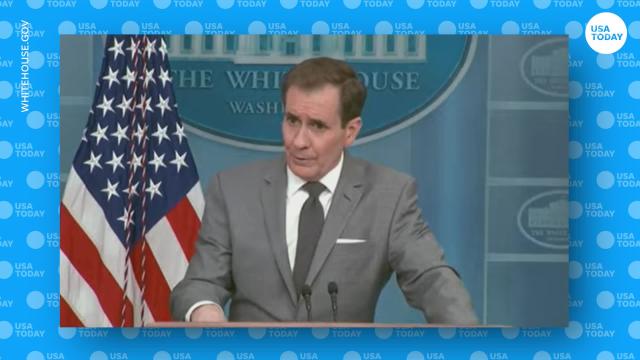Two weeks before a researcher made the genetic sequence of the SARS-CoV-2 virus available to the world, another Chinese scientist quietly posted it to a U.S. government website.
The earlier posting doesn't change the virus' origin story ‒ whether it was sparked by a live animal market or leaked from a scientific laboratory.
But it does renew questions about how much China knew about the virus and when. It suggests that vaccine development could have started sooner. And it raises new questions about how much the U.S. government knew or should have known about the virus in those early days.
"The belated discovery of the submission underscores the importance of rapid data sharing during outbreaks, since immediate public release of the sequence could have accelerated by several weeks the development COVID-19 vaccines that saved thousands of lives per week in the United States alone," virologist Jesse Bloom, wrote online Wednesday.
Republican Congress members expressed outrage Wednesday when the posting came to light. For more than a year they have been demanding documents showing when the National Institutes of Health first knew about the virus that causes COVID-19.
The Wall Street Journal was the first to report the posting of the sequence on Wednesday, after GOP officials released a statement. --->READ MORE HERE
 |
| Niphon Khiawprommas/Getty |
A seminal study on the origins of the COVID-19 pandemic has been brought into question after drawing criticism from statisticians. Study authors and experts told Newseek what they think of the matter.
In 2022, evolutionary biologist Michael Worobey, together with a global team of immunologists, virologists, biologists and statisticians, published a paper in the journal Science on the origins of the COVID-19 pandemic. By plotting the locations of the earliest known COVID-19 cases, along with the geographical locations of the earliest viral lineages, environmental samples, and circumstantial evidence, the team concluded that the Huanan Seafood Wholesale Market in Wuhan was the most likely epicenter of the coronavirus pandemic.
However, in a recent paper, published in the Journal of the Royal Statistical Society Series A, Dietrich Stoyan, a professor in mathematics and statistics at the Technical University of Bergakademie Freiberg in Germany, and Sung Nok Chiu, a professor of mathematics at Hong Kong Baptist University, described this original analysis as "fundamentally flawed."
"The paper authored by Worobey et al. (2022) faced criticism from several individuals, primarily centered around the poor quality of the data utilized," Stoyan and Chiu told Newsweek. "The main points of critique revolved around the data being incomplete in terms of numbers, imprecise in terms of addresses of infected individuals containing errors, and notably, lacking information on the times of infection.
"Our approach thoroughly examines the statistical methodology employed by Worobey et al. and demonstrates that even with excellent data, their methods fail to produce reasonable results." --->READ MORE HEREFollow links below to relevant/related stories and resources:
That nagging cough you have might not be COVID. Here’s how to determine if it’s the JN.1 variant, RSV, the flu, or a cold instead
Nonprofit: Pandemic-related learning disruptions still affecting Texas student outcomes
USA TODAY: Coronavirus Updates
WSJ: Coronavirus Live Updates
YAHOO NEWS: Coronavirus Live Updates
NEW YORK POST: Coronavirus The Latest
If you like what you see, please "Like" and/or Follow us on FACEBOOK here, GETTR here, and TWITTER here.


No comments:
Post a Comment